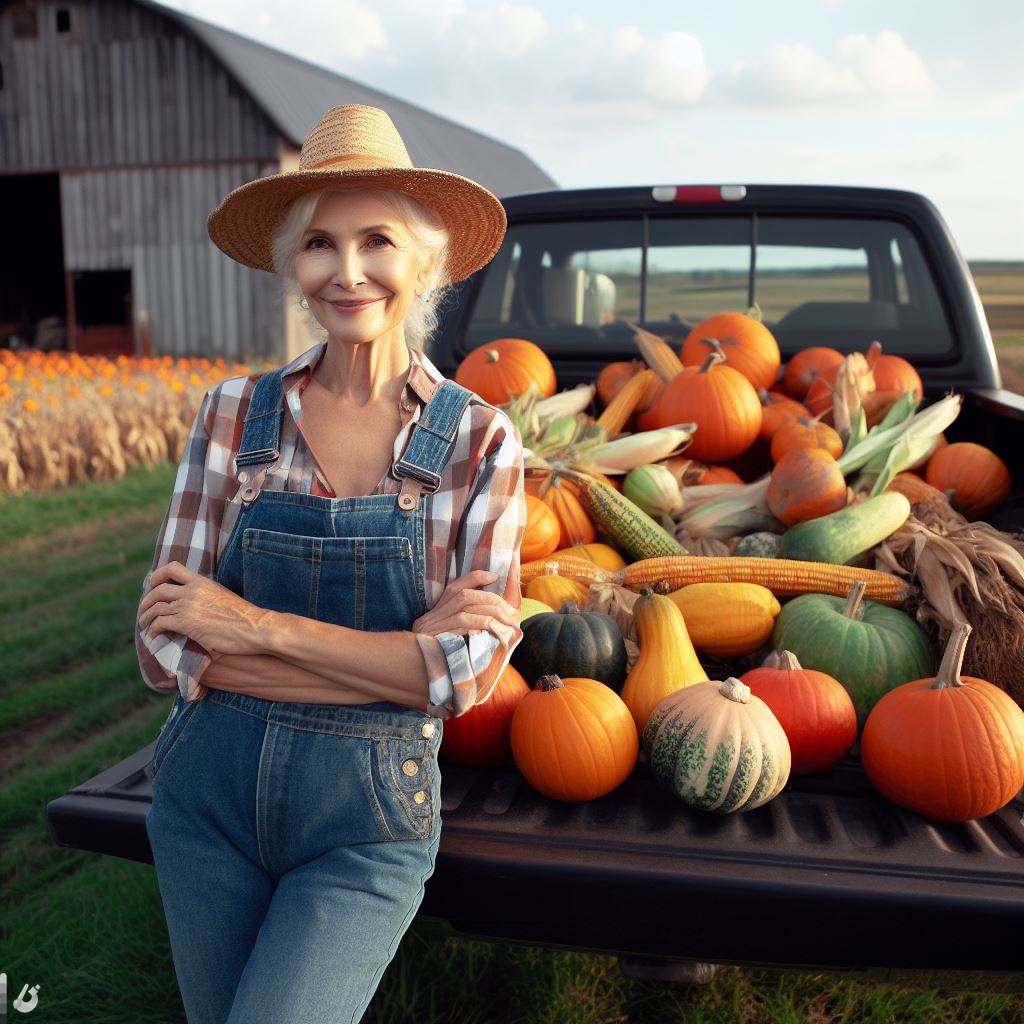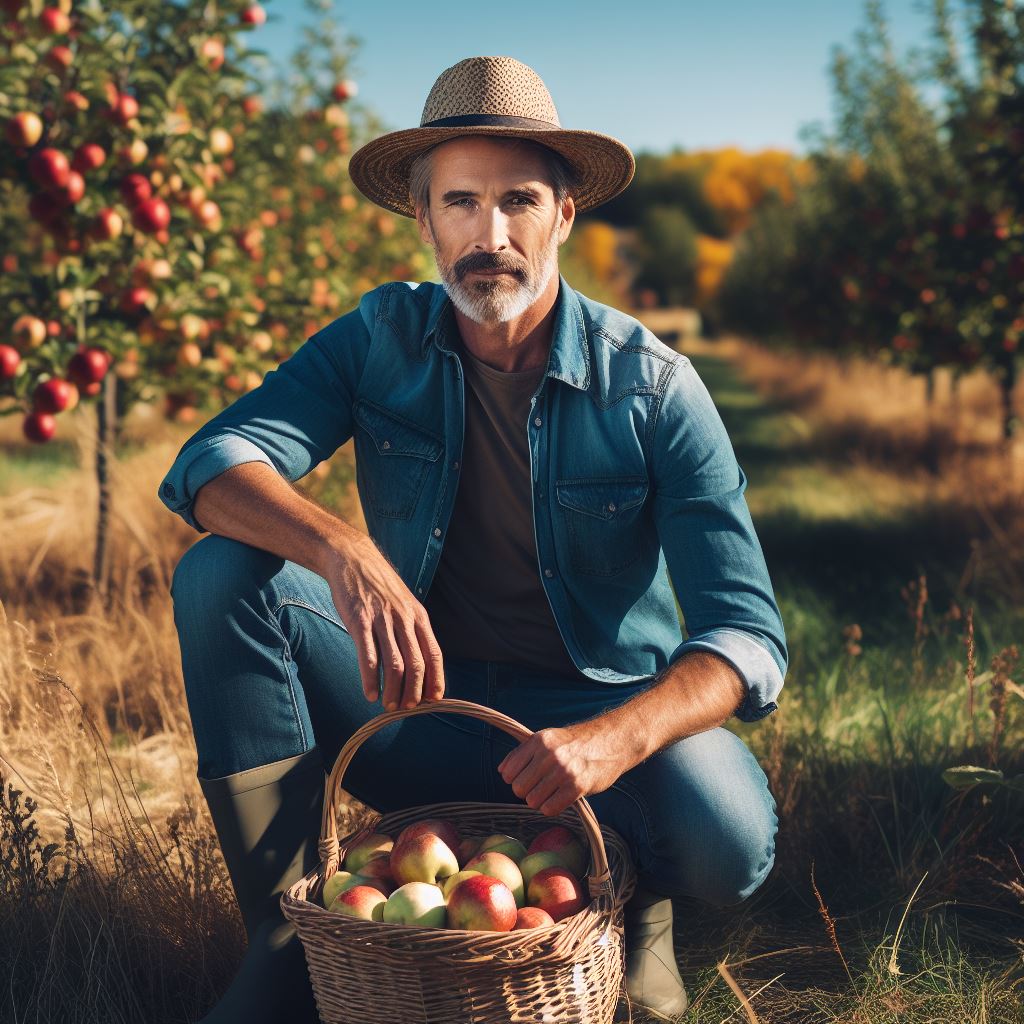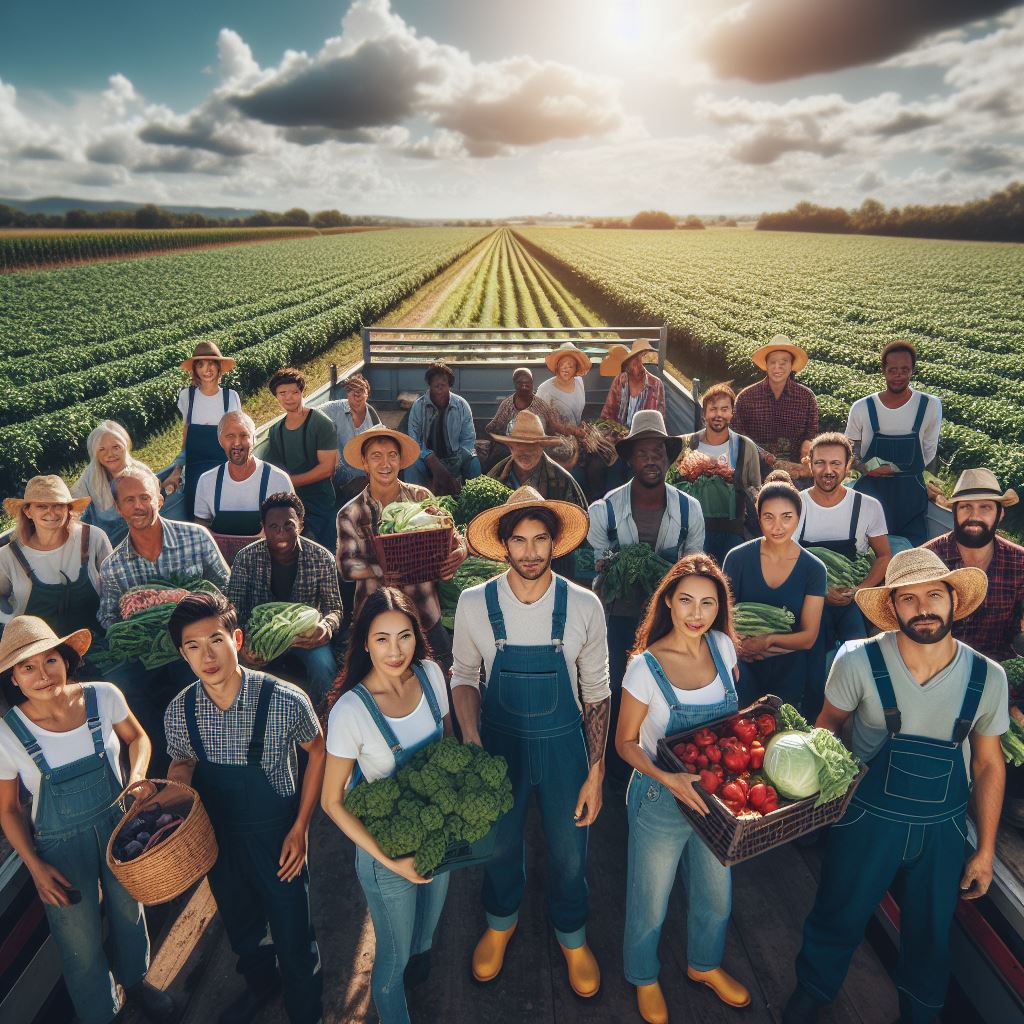Introduction
A. Importance of Understanding the Farm-to-Fork Chain
Understanding the farm-to-fork chain is crucial for consumers, farmers, and policymakers alike. It impacts food safety, sustainability, and our overall well-being.
B. Definition of the Farm-to-Fork Concept
The farm-to-fork concept encompasses the entire journey of food production, from cultivation to consumption.
It involves various stages like planting, harvesting, processing, packaging, transportation, and retail.
C. Purpose of the Blog Post
- Educate Readers: This post aims to enlighten readers on the intricacies of the farm-to-fork process.
- Highlight Interconnectedness: Explore how each stage influences the next and, ultimately, the food we put on our tables.
- Promote Conscious Choices: Encourage readers to make informed decisions, supporting sustainable practices and local farmers.
Embark on this journey with us to unravel the farm-to-fork chain and cultivate a deeper connection with the food we eat.
The Farm-to-Fork Chain: Explained
A. Definition and components of the farm-to-fork chain
The farm-to-fork chain refers to the entire process of food production and consumption.
It includes various interconnected steps that ensure food reaches consumers’ plates.
The key components are farming, processing, distribution, and consumption.
B. Importance of each step in the chain
Each step in the farm-to-fork chain plays a crucial role in ensuring food safety and quality.
Farming ensures the production of fresh and nutritious crops, while processing transforms them into various products.
Distribution ensures the smooth movement of food from farms to consumers, and consumption completes the chain.
C. Overview of the key players involved
- Farmers and producers: They are responsible for growing crops and raising livestock, ensuring a steady supply of food.
- Distributors and wholesalers: They facilitate the movement of products from producers to retailers, ensuring efficient logistics.
- Retailers and restaurants: They sell the final products to consumers, providing a convenient and accessible source of food.
- Consumers: They are at the end of the chain, enjoying the food produced and making choices that shape the market.
D. How each step contributes to the overall process
Each step in the farm-to-fork chain contributes to the overall process in the following ways:
- Farmers and producers: They cultivate crops using sustainable practices, ensuring a steady supply of fresh and high-quality food.
- Distributors and wholesalers: They efficiently transport and store products, minimizing spoilage and ensuring timely delivery.
- Retailers and restaurants: They offer a diverse range of food options, catering to consumer preferences and providing convenience.
- Consumers: They drive the demand for specific products, influencing the choices made by farmers, distributors, and retailers.
The farm-to-fork chain is a complex and interconnected system that requires collaboration among all stakeholders.
Each step is crucial in maintaining food safety, quality, and sustainability.
By understanding the chain and the importance of each step, consumers can make informed choices to support a healthy and sustainable food system.
Understanding the Farming Stage
A. Role and responsibilities of farmers
Farmers play a crucial role in the farm-to-fork chain as they are responsible for the initial stage of food production.
Transform Your Agribusiness
Unlock your farm's potential with expert advice tailored to your needs. Get actionable steps that drive real results.
Get StartedTheir role is multifaceted, involving tasks such as crop selection and cultivation, animal rearing and management, and the use of sustainable farming practices.
Crop selection and cultivation are vital aspects of a farmer’s responsibilities.
Farmers carefully analyze factors such as soil type, climate, and market demand to make informed decisions about the crops they will grow.
They must also ensure proper irrigation, fertilization, and pest control to support healthy crop growth.
In addition to crop production, farmers are also involved in animal rearing and management.
They raise livestock for meat, dairy, or other agricultural purposes.
This includes providing adequate nutrition, shelter, and healthcare to ensure the well-being of the animals.
Sustainable farming practices are becoming increasingly important in modern agriculture.
Farmers need to embrace techniques that reduce the negative environmental impact of their activities.
This may include practices such as organic farming, crop rotation, and the use of natural pesticides.
By adopting these methods, farmers minimize soil erosion, protect biodiversity, and preserve water resources.
B. Challenges faced by farmers in the farm-to-fork chain
Despite the significance of their role, farmers face numerous challenges in the farm-to-fork chain.
One of the major challenges is climate change and unpredictable weather patterns.
Extreme weather events such as droughts, floods, and heatwaves can devastate crops and livestock, resulting in significant financial losses for farmers.
Pests and diseases also pose a constant threat to farmers. Insects, fungi, and other pathogens can decimate yields if not effectively managed.
Farmers need to employ various tactics, including crop rotation, integrated pest management, and timely application of pesticides, to mitigate these risks.
Financial constraints further compound the challenges faced by farmers.
High input costs, fluctuating market prices, and limited access to credit can make it challenging to invest in modern farming technologies and equipment.
This can hinder productivity and limit the ability of farmers to meet quality and quantity demands.
In essence, farmers play a crucial role in the farm-to-fork chain, with responsibilities ranging from crop selection and cultivation to animal rearing and management.
They are also at the forefront of adopting sustainable farming practices to ensure a healthy and environmentally friendly food production process.
However, they face significant challenges, including climate change, pests and diseases, and financial constraints, which require support and innovative solutions to sustainably meet the growing demand for food.
Read: Seasonal Eats: What Farm-to-Table Offers
The Importance of Efficient Distribution and Wholesale Systems
Efficient distribution and wholesale systems are vital components of the farm-to-fork journey.
Showcase Your Farming Business
Publish your professional farming services profile on our blog for a one-time fee of $200 and reach a dedicated audience of farmers and agribusiness owners.
Publish Your ProfileThey play a crucial role in bridging the gap between producers and consumers, ensuring that fresh and high-quality farm products reach the end consumers in a timely manner.
Let’s take a deeper look at the importance of these systems and how they address various challenges.
A. Role of distributors and wholesalers
1. Transportation and logistics
Distributors and wholesalers are responsible for coordinating the transportation and logistics of farm products.
They efficiently manage the movement of goods from farms to various distribution points, such as grocery stores, farmers markets, and restaurants.
This involves organizing the timely delivery of products, arranging the necessary storage facilities, and optimizing transportation routes to ensure efficient and cost-effective distribution.
2. Quality control and packaging
Distributors and wholesalers play a critical role in maintaining the quality and ensuring the proper packaging of farm products.
They conduct rigorous quality control checks to ensure that the products meet the necessary standards for freshness, taste, and safety.
Additionally, they handle the packaging process, ensuring that the products are packed and labeled correctly, reflecting their origin, nutritional information, and any necessary certifications.
B. Addressing challenges in distribution and wholesale
1. Maintaining product quality and freshness during transit
One of the significant challenges in the distribution and wholesale process is preserving the quality and freshness of farm products during transit.
Distributors and wholesalers employ various strategies to address this challenge.
They use refrigerated trucks and equipment to maintain suitable temperature conditions, preventing spoilage and preserving product quality.
Additionally, they implement proper handling techniques to minimize physical damage and ensure the products remain intact.
2. Minimizing food waste and spoilage
Distributors and wholesalers also contribute to minimizing food waste and spoilage.
They carefully monitor and manage inventory levels to avoid overstocking perishable items.
By implementing efficient inventory management practices, they can reduce the chances of products expiring or becoming unsellable.
Furthermore, they establish close relationships with retailers, allowing them to gather feedback and adjust their supply accordingly, minimizing the risk of excessive food waste.
C. Collaborations between farmers and distributors
Collaborations between farmers and distributors are essential for building efficient distribution and wholesale systems.
By establishing strong relationships and open communication channels, farmers can better understand the demands of the market, enabling them to produce the right quantities of different products.
Distributors, on the other hand, can provide valuable insights into consumer preferences and market trends, helping farmers make informed decisions about their production and supply.
Such collaborations also lead to a more streamlined and sustainable supply chain, where both parties work towards a common goal of providing fresh, high-quality farm products to consumers.
In general, efficient distribution and wholesale systems are vital for the successful implementation of the farm-to-fork concept.
Distributors and wholesalers play an integral role in ensuring the smooth movement of farm products, maintaining quality, addressing challenges related to transportation and spoilage, and fostering collaborations with farmers.
By recognizing the importance of these systems and actively working towards their optimization, we can create a sustainable and resilient food supply chain, benefiting both producers and consumers.
Read: Eating Local: Benefits for You and Farmers

Retailers and Restaurants: Connecting Producers and Consumers
A crucial link in the Farm-to-Fork chain is the role of retailers and restaurants.
A. Role and impact of retailers and restaurants
1. Curating the products available to consumers
Retailers and restaurants are responsible for selecting the products they offer to consumers.
They have the power to shape consumer preferences and influence purchasing decisions.
By carefully curating a diverse range of products, retailers and restaurants expose consumers to new and unique options, promoting variety and choice.
2. Ensuring food safety and compliance
Retailers and restaurants have a vital role in upholding food safety standards and compliance with regulations.
They must carefully monitor the quality of the products they source and serve to consumers.
By doing so, they protect consumers from potential health hazards and maintain trust in the Farm-to-Fork supply chain.
B. Importance of supporting local producers and vendors:
1. Creating sustainable and resilient local economies
When retailers and restaurants support local producers and vendors, they contribute to the development of sustainable and resilient local economies.
By sourcing products locally, they stimulate economic activity, create jobs, and support small-scale farmers and businesses.
This strengthens the local community and reduces dependence on large-scale industrial farming.
2. Enhancing the community’s access to fresh and nutritious food
Supporting local producers also improves the community’s access to fresh and nutritious food.
By sourcing locally grown or produced items, retailers and restaurants reduce the distance between the source of the food and the consumer.
This results in fresher food that retains more nutrients and flavor.
Additionally, supporting local producers reduces the need for long-distance transportation, which can have negative environmental impacts.
In a nutshell, retailers and restaurants play a crucial role in connecting producers and consumers in the Farm-to-Fork chain.
By curating products, ensuring food safety, and supporting local producers, they contribute to the sustainability, resilience, and accessibility of the local food system.
Showcase Your Farming Business
Publish your professional farming services profile on our blog for a one-time fee of $200 and reach a dedicated audience of farmers and agribusiness owners.
Publish Your ProfileAs consumers continue to prioritize transparency and sustainability, the role of retailers and restaurants in the Farm-to-Fork movement will only grow in importance.
Read: Farmers’ Stories: Voices Behind Your Food
The Power of Informed Consumers
A. Importance of consumer awareness in the farm-to-fork chain
Consumer awareness plays a crucial role in the farm-to-fork chain.
Informed consumers have the power to drive change and promote sustainable farming practices.
By understanding the impact of their choices, they can make a positive difference in the way food is produced.
1. Encouraging sustainable farming practices
When consumers are aware of the environmental impact of conventional farming methods, they can actively seek out products from farms that adopt sustainable practices.
This creates a demand for environmentally friendly farming methods, leading to a shift towards more sustainable agriculture.
2. Supporting ethical sourcing
Consumer awareness also promotes ethical sourcing.
By being informed about the working conditions and treatment of farmers, consumers can choose products that support fair trade and social justice.
This puts pressure on the industry to prioritize ethical standards throughout the farm-to-fork chain.
B. Educating consumers about the farm-to-fork chain
Educating consumers about the farm-to-fork chain is essential to empower them to make informed decisions.
There are two primary ways to achieve this: through labeling and certifications, and direct engagement with producers.
1. Labeling and certifications
Clearly labeling products with information about their origin, farming methods, and certifications allows consumers to make conscious choices.
Certifications such as organic, fair trade, or non-GMO provide valuable guidance for consumers seeking specific attributes in their food purchases.
2. Direct engagement with producers
Consumers can actively engage with producers through farmers’ markets, community-supported agriculture (CSA), or farm visits.
By interacting directly with farmers, consumers gain firsthand knowledge about the farm-to-fork chain, fostering a deeper understanding and appreciation for the food they consume.
C. Empowering consumers to make conscious food choices
Consumer empowerment is the cornerstone of the farm-to-fork movement.
Informed consumers have the ability to make conscious food choices that align with their values and contribute to a more sustainable and ethical food system.
With the information available about farming practices, sourcing, and certifications, consumers can actively support sustainable agriculture, fair trade, and ethical treatment of producers.
By choosing to buy from local farmers or supporting small-scale producers, consumers can make a positive impact on their community and the environment.
Furthermore, educated consumers can advocate for policy changes and engage in dialogue with food producers, retailers, and government agencies to influence the farm-to-fork chain positively.
They have the power to demand transparency, accountability, and best practices throughout the entire food supply chain.
In summary, informed consumers play a vital role in the farm-to-fork chain.
Their choices and demand for transparency and sustainability drive positive changes in farming practices and sourcing.
By educating consumers and empowering them to make conscious food choices, we can create a more ethical, sustainable, and resilient food system for the future.
Read: Local Foods Impact: A Consumer’s Guide
Conclusion
Throughout this blog section, we have explored the farm-to-fork chain, understanding its importance in our food system.
From the start at the farm, where crops are grown and animals are raised, to the final destination on our plate, this chain encompasses multiple steps and stakeholders.
By supporting local producers, we can strengthen the farm-to-fork chain and promote sustainable farming practices.
Understanding the journey our food takes creates a deeper connection to the sources of our nourishment.
As consumers, we play a crucial role in the farm-to-fork movement.
By making conscious choices about where we source our food and supporting local farmers, we can contribute to a more sustainable and resilient food system.
The farm-to-fork chain is not just a concept, but a vital link that connects us to the origins of our food.
By embracing this connection, we can foster a healthier and more sustainable future for ourselves, our communities, and the planet.
Let us join hands and become active participants in the farm-to-fork movement, recognizing the significance of each link in the chain and the positive impact we can collectively create.
Together, we have the power to shape the future of our food system and ensure its sustainability for generations to come.




